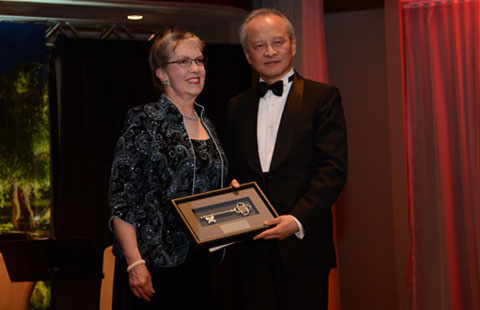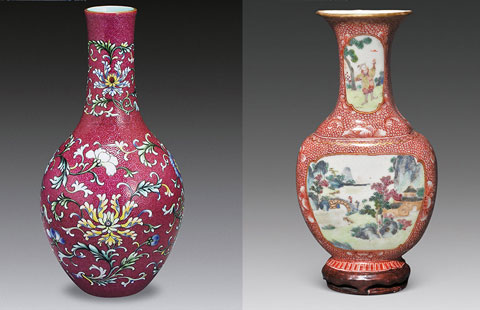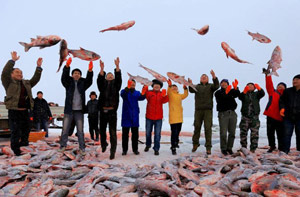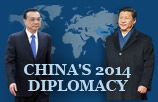Change growth engine
Updated: 2014-04-11 07:15
(China Daily)
|
||||||||
Negative trade growth in the first quarter definitely surprised Chinese policymakers who have forecast annual trade growth of 7.5 percent.
Yet, a 1-percent decline in China's total foreign trade volume so far this year is no cause for panic.
Instead, it should remind the world's largest trader in goods of the increasing urgency to cut its dependence on export-led growth.
Official data on Thursday showed that China's exports fell 6.6 percent from a year earlier while imports contracted by 11.3 percent in March.
As a result, for the first three months of 2014, China recorded a trade surplus of $16.7 billion, down sharply from $43.1 billion the year before, while its total foreign trade volume declined 1 percent year-on-year to $966 billion.
Such poor performance not only represents a quite unexpected departure from the huge contribution fast-growing foreign trade has always made to China's double-digit growth during most of the past three decades. It is also a far cry from its actual expansion of 7.6 percent last year.
Domestically, the fact that March's trade decline came after exports shrank by 18.1 percent in February should justify worries about its possible impact on employment.
Internationally, China's cooling trade growth may even weaken global trade growth.
Under such circumstances, Chinese policymakers should carefully examine the overall health of the import and export sectors to identify risks with sweeping implications at home and abroad.
But there is no need for blind pessimism and reckless stimulus.
On the one hand, the current drop in trade growth may be only temporary because of a high base figure in the corresponding period last year. It is believed that over-invoicing to disguise capital flows might have played a key role in inflating export growth to 20 percent year-on-year in the first quarter of 2013.
On the other hand, in the long run, the declining role of foreign trade as a growth engine is in line with both the change of China's competitive advantages in traditional trade and its economic transformation towards consumption-led growth.
When the growth engine of foreign trade begins to run out steam, possibly more quickly than expected, Chinese policymakers should no longer rush to consider more support for exporters. Since domestic demand is to become the ultimate driver for China's sustainable growth in coming decades, they should spare no effort to boost the new growth engine to pick up the slack.

 Music at her fingers
Music at her fingers
 Across America Over the Week (Jan 16 - Jan 22)
Across America Over the Week (Jan 16 - Jan 22)
 Spend Chinese New Year in style
Spend Chinese New Year in style
 Ili river valley becomes a popular destination for swans
Ili river valley becomes a popular destination for swans
 Philip Ma: from scientist to businessman
Philip Ma: from scientist to businessman
 Birmingham's Spotlight on China dinner
Birmingham's Spotlight on China dinner
 How to distinguish doucai, wucai, Famille-rose and enamel porcelain
How to distinguish doucai, wucai, Famille-rose and enamel porcelain
 Xinjiang lake in bumper fishing season
Xinjiang lake in bumper fishing season
Most Viewed
Editor's Picks

|

|

|

|

|

|
Today's Top News
Houston's SW Chinatown
China to focus on reforms, opening of capital market
Slowdown brings new risks to banks
Trade group calls for BIT
Market status for China is 'political' issue
Birmingham's Spotlight on China dinner
Bank takes renminbi-clearing seriously
Traditional Garb
US Weekly

|

|







